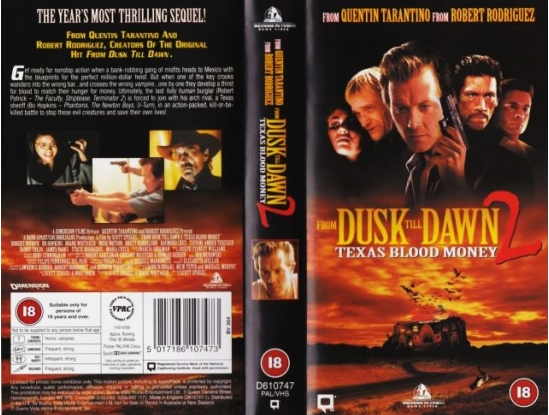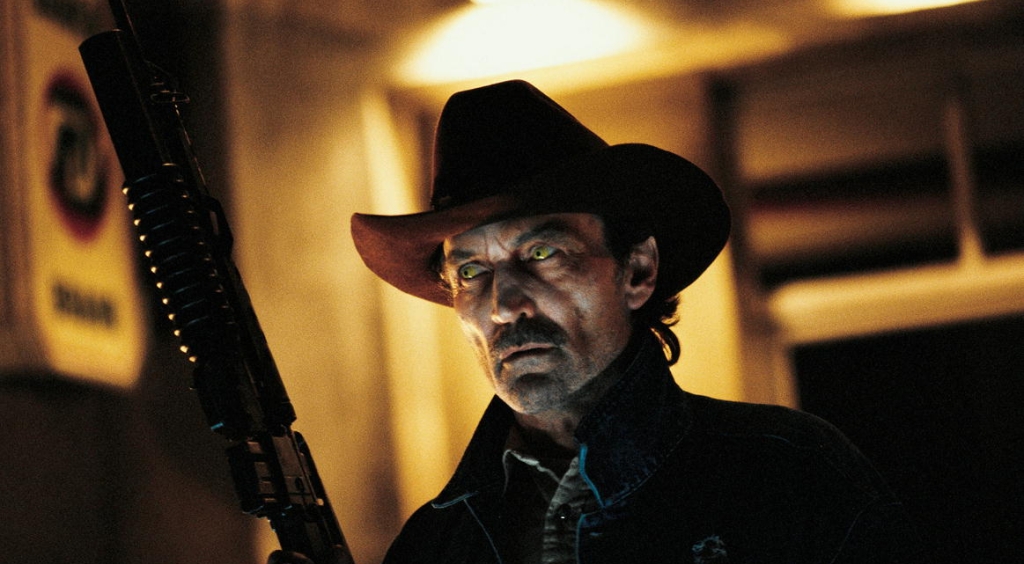Anyone who’s briefly dipped their toe into the sometimes murky Direct-to-Video waters will know they can be incredibly hit and miss, even more so for the casual viewer. Due to the sheer number that is put out year after year, along with the varying quality they can often end up gaining a bad rap among snobbier film fans. Whether they like it or not, in the realm of DTV, the sequel is king [1]. During the late 90s and early 00s, these were inevitably sequels to a franchise that originally started theatrically; there are very few places the sequel-hungry DTV won’t go.
In more recent years the likes of the Undisputed and Universal Soldier franchises have excelled past their predecessors, sometimes even breaking new ground for the quality of DTV. Hell, even on the very rare occasion they have gained accolades from fans and critics. The jaded film fan would often see a DTV sequel to a film that was first released in cinemas as a cheap cash-in, particularly if it’s released several years after the original. To some extent, that’s pretty close, but in-between blood-sucking producers looking to make a quick buck off a known property, there are still filmmakers looking to add to the previously established mythos.
Although the average renter would see these as potentially generic entries, some of these Part Twos are incredibly fun and one DTV entry that remains unfairly judged – over twenty years later – is From Dusk Till Dawn 2: Texas Blood Money (1999). While Texas Blood Money is billed as a DTV sequel, like many of its ilk it has only a passing connection to its older sibling. Besides the always-watchable Danny Trejo returning from the first film, albeit in a slightly different role, Texas Blood Money has enough going for it that it deserves a second chance or even a first viewing, no matter how highly regarded the first film may be.
With the first entry, Robert Rodriquez and Quentin Tarantino paid homage to the mashup genre films found in the Drive-Ins during the 1960s and 1970s. The two filmmakers successfully melded a violent serial killer road movie with a high concept, single location Vampire film with its zippy monologues and outlandish gore effects from KNB EFX (at the top of their game). Its sense of fun and ludicrousness (which has always been a component of Rodriquez’s films) still feels as fresh now as it did in 1996.
For Texas Blood Money, director Spiegel goes a slightly different route and opts for a heist movie/Vampire hybrid, and it works thanks in large part to its inclusion of Robert Patrick, the late Bo Hopkins, and a slew of character actors from the low-budget sphere such as Stacie Randall, Duane Whitaker (who co-wrote the script with Spiegel), Muse Watson (on scene-chewing form), and Raymond Cruz. The idea of crooks-turned-vampires still feels uniquely high-concept; adding a sense of urgency to proceedings – they can’t be killed by the police and their guns, but also the sun will rise in a matter of hours.
Texas Blood Money is a DTV sequel that deserves, nay requires at least a second viewing if only because of Spiegel’s creativeness within the budgetary limitations. In the opening, we have a cheeky cameo from Bruce Campbell and Tiffani Thiessen in a fake vampire movie playing on a TV (I’d love to see that full movie). Even during this brief fake film tease, it’s clear that Spiegel and co-writer Duane Whitaker are knowledgeable of their genre of horror films and effectively play with the audience’s expectations, no doubt to the chagrin of viewers who thought Campbell would be an actual character in the film. Subversion with such a low-budget film feels ballsy and should be commended.
Director Spiegel manages to achieve a lot within such a small budget; his time on the original Evil Dead films influenced some pretty stellar camera angles – POV shot from inside a vampire’s mouth before their victim is munched on will linger with you long after the brief runtime – thanks to cinematographer Philip Lee. The gimmicky nature of the shot adds to the film’s unique schlocky charm, allowing it to be visually distinctively from its predecessor. The decidedly small-scale scenario and location also adds to the tense, claustrophobic nature of the proceedings. This works in the film’s favour once Buck (Robert Patrick) finally begins hunting down his (now vampiric) bank robbing brothers-in-arms. There’s a genuine fear of him not surviving the fanged confrontations. Again, Spiegel masterfully plays with the low budget and has Buck go up against his old teammates in a smoke-filled bank; itself feeling like a homage to a Hammer Horror climax.
Texas Blood Money remains a criminally overlooked DTV gem and one that rewards those willing to sit back and enjoy the wonderful schlock on display. While its follow-up From Dusk Till Dawn 3: The Hangman’s Daughter (1999) is more widely respected among fans of the franchise – itself a unique melding of a period Vampire/Western that feels ripped from a pulp horror novel – Texas Blood Money remains a tight, stripped-down genre flick tailor-made for midnight film screenings. Take a punt on it, you might be surprised at just how entertaining this one is.
[1] With Jim Wynorski’s self-proclamation that he’s the unofficial ‘king of the sequel’, I’m inclined to believe him, and the world of DTV is all the richer because of his descents into many a sequel from original properties or previously established ones.



Leave a comment